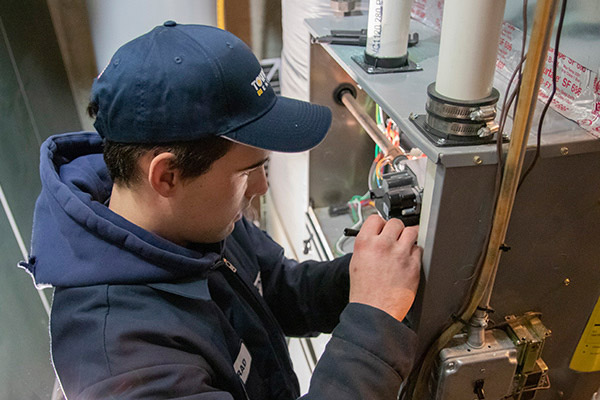Indoor Air Quality Canoga Park - Top Rated HVAC Contractors
Indoor Air Quality Canoga Park - Top Rated HVAC Contractors
Blog Article
Home Comfort Solutions Canoga Park HVAC Contractor Locator - Insulation
Indoor air quality is crucial for maintaining a healthy living environment. Many people spend a significant amount of time indoors, making understanding the common factors affecting indoor air quality essential for general well-being. Poor air quality can result in numerous health issues, including respiratory problems, allergies, and other long-term conditions.
One of the first contributors to indoor air quality is air flow. Proper air flow helps flow into fresh air within a space, diluting pollutants and moisture. Insufficient air flow can entice contaminants, resulting in elevated concentrations of airborne toxins. Homes and buildings that are too tightly sealed for power efficiency can lead to poor airflow, emphasizing the need for balanced ventilation systems.
Another important issue is the presence of indoor pollution. These can come from a variety of sources, together with family cleaners, paints, and pesticides. Volatile natural compounds, or VOCs, are commonly discovered in many family products. When these products are used or saved improperly, they will release dangerous gases into the air, contributing to compromised indoor air quality.
Humidity ranges significantly affect air quality as nicely. High humidity can create a breeding floor for mold, mud mites, and different allergens. Conversely, low humidity can lead to dry pores and skin and respiratory discomfort. It's important to maintain optimal humidity levels, usually between 30% and 50%, to promote a comfortable and wholesome indoor surroundings.
HVAC Equipment Sales Canoga Park Experienced HVAC Contractor
Temperature performs a task in how air quality is perceived and its actual composition. Comfortable temperatures are necessary not only for bodily well-being but in addition for mental concentration. Fluctuations in temperature can affect the distribution of pollution as properly as the performance of heating and cooling systems. Thus, maintaining stable temperatures is vital for enhancing indoor air quality.
Common sources include volatile natural compounds (VOCs) from paints and cleansing products, mold, mud, pet dander, tobacco smoke, and out of doors pollutants that enter buildings. Managing these sources is crucial for sustaining good indoor air quality.
How can humidity ranges influence indoor air quality?
High humidity can promote mold development and mud mites, while low humidity can cause respiratory points and discomfort. Maintaining indoor humidity ranges between 30-50% can help mitigate these results.
What function does ventilation play in indoor air quality?
- Commercial HVAC Canoga Park
Eco-Friendly HVAC Canoga Park AC Installation & Heating - HVAC Contractor
Proper ventilation is important for diluting indoor pollutants and bringing in recent air. It helps scale back the focus of dangerous substances and helps total respiratory well being by guaranteeing sufficient oxygen ranges.

Yes, long-term publicity to poor indoor air quality these details can result in respiratory points, allergy symptoms, complications, and in some cases, serious health problems similar to bronchial asthma and heart problems.
Zone Control HVAC Canoga Park Heating & Cooling - HVAC Services
How often should I change air filters in my HVAC system for optimum air quality?
Typically, it is recommended to vary HVAC air filters every 1-3 months, relying on utilization and the kind of filter. Regular maintenance helps ensure the system operates effectively and improves indoor air quality.
HVAC Upgrades Canoga Park Heating & AC Services - HVAC Contractor
What are some easy ways to enhance indoor air quality at home?
Simple measures include maintaining home windows open for fresh air when weather permits, utilizing an air air purifier, reducing the usage of harsh chemical substances, maintaining humidity levels, and frequently cleansing and vacuuming to minimize dust.
HVAC Troubleshooting Canoga Park Top 10 Best HVAC Contractor
Can indoor crops assist improve air quality?
Yes, sure indoor plants have been proven to soak up toxins and improve indoor air quality - HVAC Certifications Canoga Park. Plants like spider vegetation, snake vegetation, and peace lilies can improve aesthetics whereas selling more healthy air.
Is indoor air quality worse in winter months?
HVAC Financing Options Canoga Park Plumbing & HVAC Contractors
Indoor air quality can worsen in winter due to lowered air flow from sealed home windows and elevated heating, which can dry out the air and elevate indoor pollutants. It's essential to observe and handle air quality year-round.

How does outdoor air quality have an effect on indoor air quality?
Outdoor air pollution can infiltrate indoor areas by way of home windows, doorways, and ventilation methods. Poor outside air quality can considerably impression indoor air, so consciousness and preventive measures are key to sustaining a wholesome environment.
Duct Cleaning Canoga Park HVAC Company Near You
What steps should businesses take to ensure good indoor air quality?
Businesses ought to carry out common maintenance on HVAC systems, ensure sufficient air flow, conduct air quality assessments, minimize the use of poisonous supplies, and encourage a smoke-free setting to promote employee health and productivity. Report this page